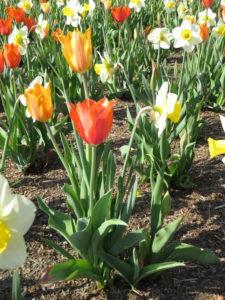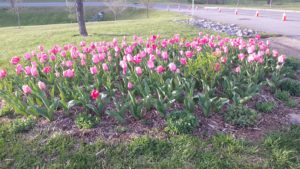Digging lots of holes to plant 25 0r 50 tulip bulbs is a backbreaking chore. It doesn’t have to be that way. More than a decade ago, plant researchers at Cornell University in Ithaca, N.Y., developed a planting method called “top-planting”. It eliminates all the digging and the tulips come back and bloom well for several years.
Top-planting, also called “drop and cover,” requires a lot less effort. I call it “No Dig Bulb Planting” and is a lot simpler:
- Till the planting area 3 to 4 inches deep with a roto-tiller.
- Plant in a site with full sun and good soil drainage.
- Spread bulb fertilizer and lightly till in the fertilizer (optional).
- Set the bulbs on top of the tilled area (no need to press the bulb into the ground).
- Cover with 2 to 4 inches of composted mulch or aged compost.
- No Dig works as well for daffodils as tulips.
Do not over-mulch. Adding more mulch may result in less blooms. Any good garden compost or double ground bark mulch should work. Brent Heath, co-owner of Brent and Becky’s Bulbs in Gloucester, VA recommends adding two inches of mulch in the fall.
Bulb Spacing: Tulip (or daffodil) bulbs that measure 2 inch wide bulbs should be spaced 3 times the bulb size or 6 inches apart. That’s 4 bulbs per square foot.
Tulip varieties that perennialize well are recommended, “particularly Darwin hybrids” according to Brent Heath. Bulbs will re-grow and re-bloom for several years after planting. Many gardeners may opt to inter-plant bulb plantings with summer flowering annuals, perennials, and vegetables.
Caveat: dormant tulips and daffodils like to spend their summers in dry soil. Too much irrigation during the summer months may rot the sleeping bulbs.
Gardeners can enjoy masses of tulips without digging a hole for each bulb.



 Posted in
Posted in 
